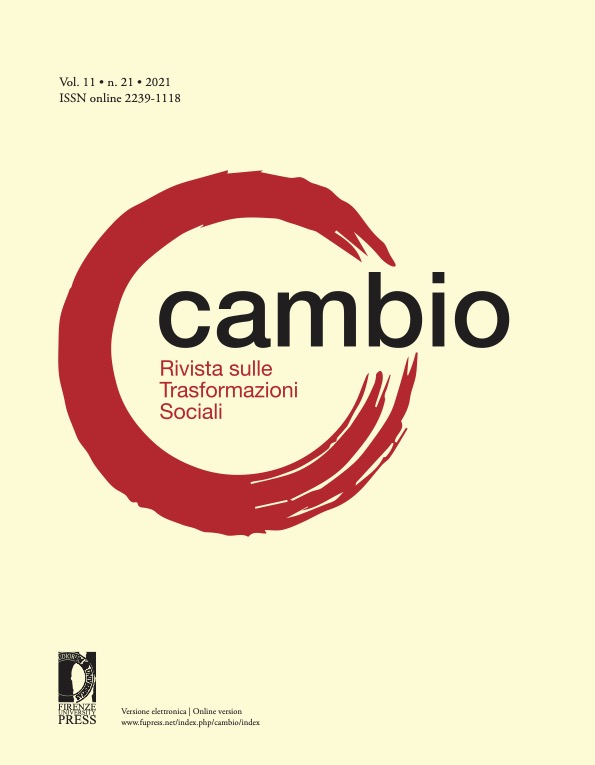Published 2021-11-30
Keywords
- spatial analysis,
- COVID-measures,
- COVID-spread,
- COVID-issues,
- twittersphere
- COVID-19 ...More
How to Cite
Abstract
Related to the first period of the COVID-19 pandemic (March-June 2020), some recent studies on the application of content analysis of geolocalized tweets (Bashar et alii 2020, Punziano et alii 2020) have demonstrated the negative relation between the Coronavirus spread (with Northern Italy most affected) and the polarity of social narratives about the pandemic. In brief, the «resilient» social narrative of the most impacted regions has corresponded to a negative and worried emergency narrative of the less affected regions. In relation to epidemiological data, the second phase of the pandemic (also referred to as the «second wave», in autumn 2020) has been very different from the first (ISSa 2020). The severity of emergency, without considering questions about the reliability of the first wave data (Istat 2020a), has been more relevant and homogeneous across Italy. The study questions whether there are differences between the geography of contagion and that of the narrative. Given the increasingly homogeneous spread of the virus, the assumption has been that the digital arena also has ended up showing a narrative more united on negative sentiments. The issue is addressed by analyzing a corpus of geolocalized tweets, extracted in the period from the new October lockdown to the partial and fragmented pre-Christmas reopenings in 2020. Following the application of a model combining text mining and GIS analysis, the most recurrent themes in social discourse on Twitter were mapped. This geography of emerging social narratives (COVID-Issues) compared with the geography of contagion spread (COVID-Spread) and the norms (COVID-Measures) allowed to detect the trend in the relationship of these three dimensions during the second emergence from COVID-19.


